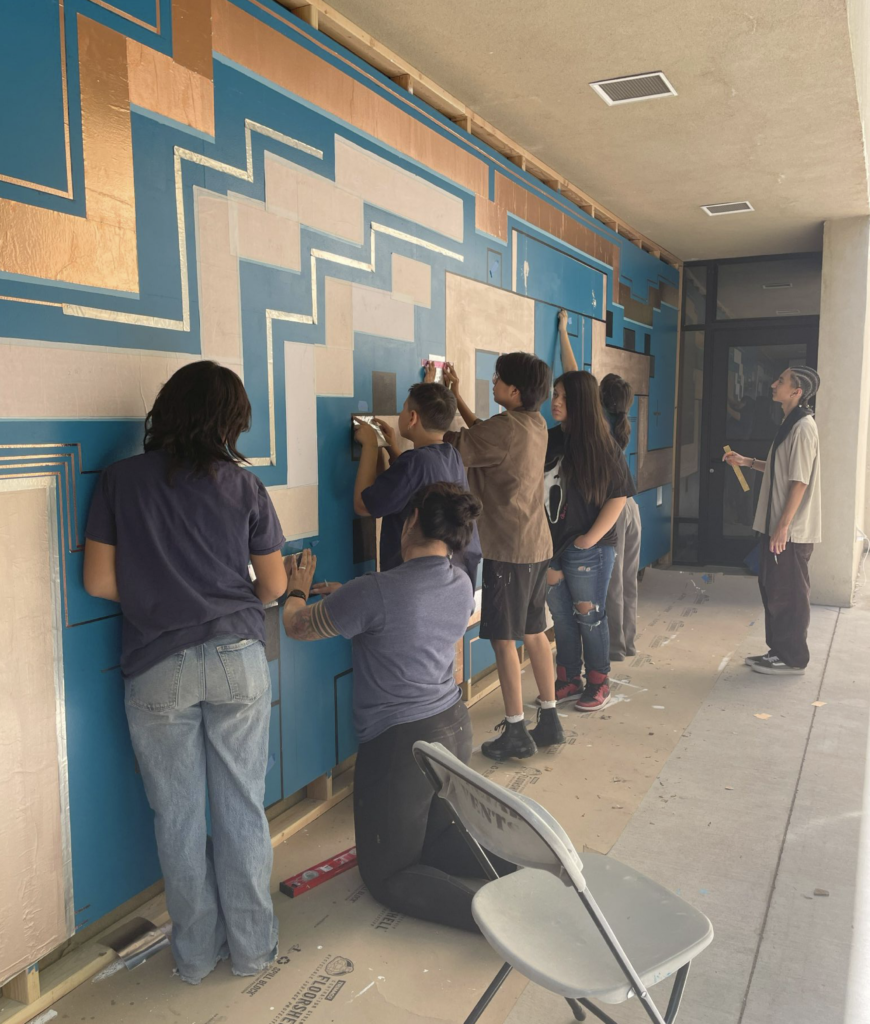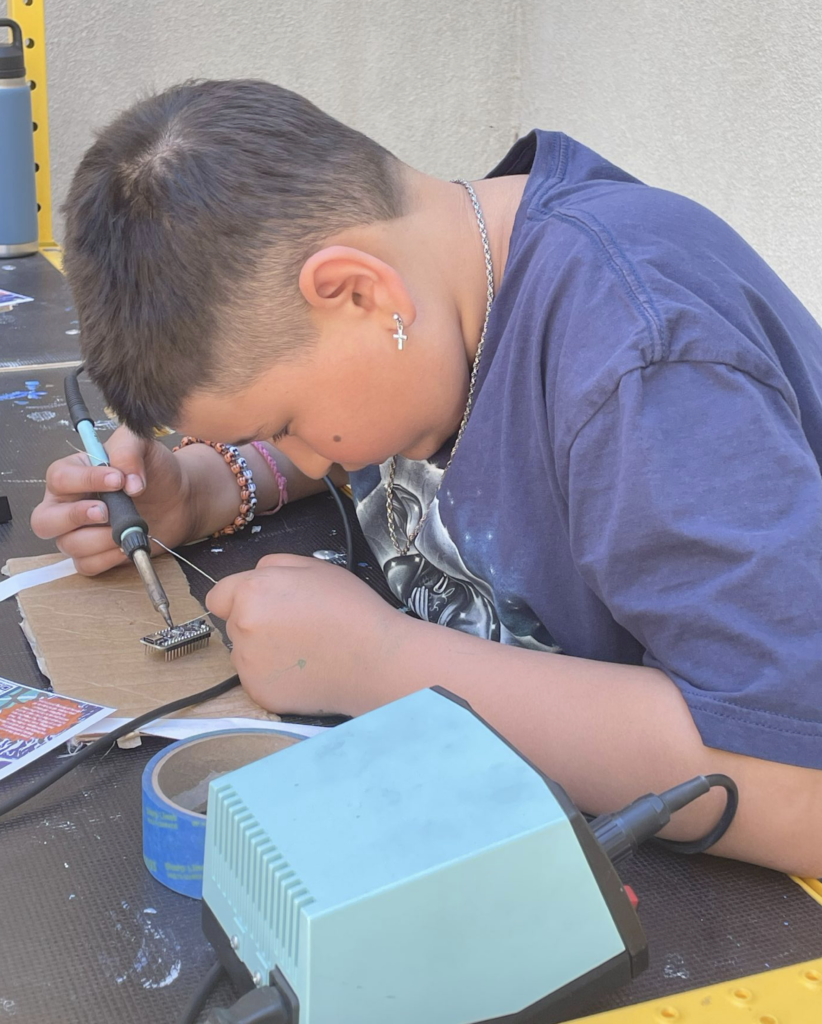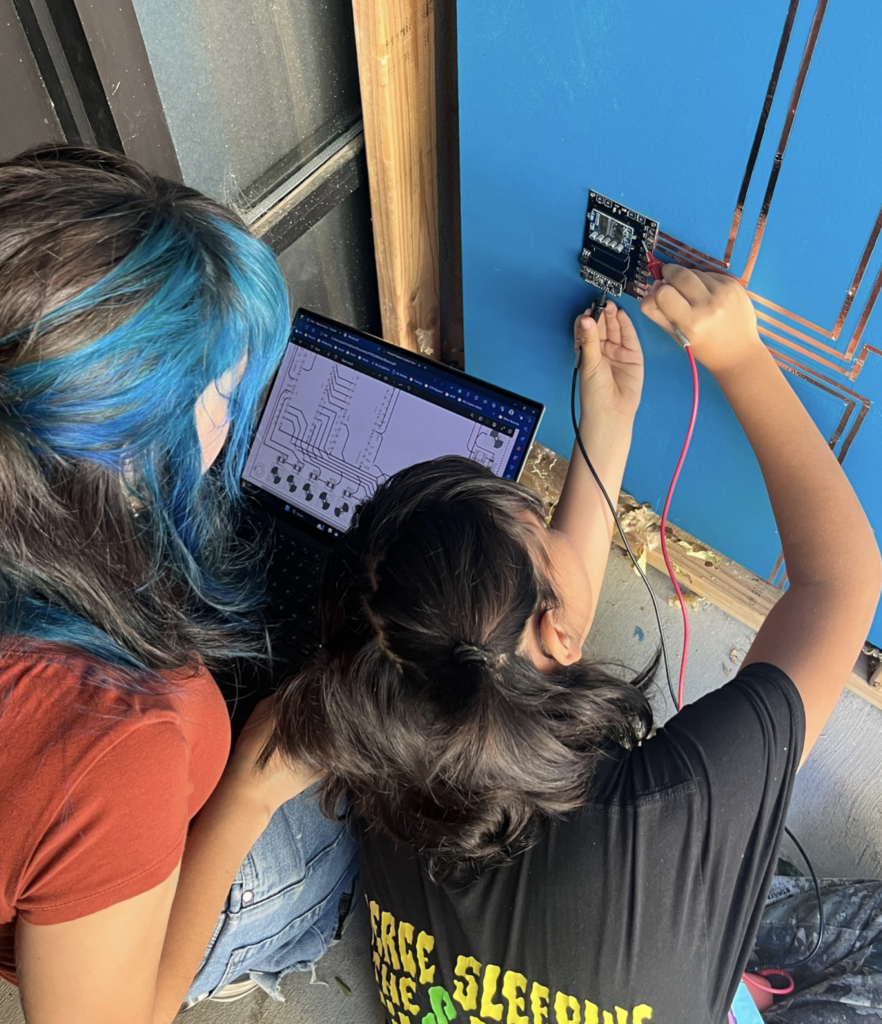PAHTIA: Interactive Mural at NHCC
PAHTIA is an interactive site-specific mural that creates shifting soundscapes in response to touch. It is permanently installed in an outdoor courtyard at the National Hispanic Cultural Center’s art museum. It can be visited during museum hours.
Years: 2023
Title: PAHTIA
Collaborators: Nani Chacon, Alyshia Bustos, Alyssa Johnson, student artists, Erin McClure, Mia Shaw, and Leah Buechley
Overview
PAHTIA is an interactive site-specific mural that creates shifting soundscapes in response to touch. The conceptual and artistic design was led by Nani Chacon. The interaction design and sound design were led by Alyshia Bustos and Leah Buechley.
This work was created by asking the question: How can we create spaces for community and individual healing? How does the activation of a space contribute to healing? This piece references ancient healing practices which utilize sound frequencies to activate healing responses within the body and mind. The mural was inspired by Meso-American and pre-colonial design. Many Aztec, Mayan, and Anasazi structures were built to act as public amplifiers, resonating with the frequencies of music and chants used in ceremonies. Our piece is in dialogue with the Meso-American architectural elements used and referenced in the design of the Hispanic Cultural Center by architect Sofia Marquez.
Culturally Responsive Technology Learning
This mural was created in collaboration with a group of diverse Albuquerque middle and high school students. Through the project, students were introduced to electronics, programming, and interaction design. Students were deeply involved in every aspect of the project including conceptual design, visual design, and interaction design as well as construction.



Interactive Murals as New Technologies
The mural is an architectural-scale circuit board that generates and modulates sound in response to touch. All of the decorative mural elements are also capacitive touch sensors. The mural contains six custom boards, each containing two microcontrollers as well as an amplifier and a speaker. One microcontroller on each board is devoted to touch sensing and one is dedicated to real-time 8-bit audio synthesis.
